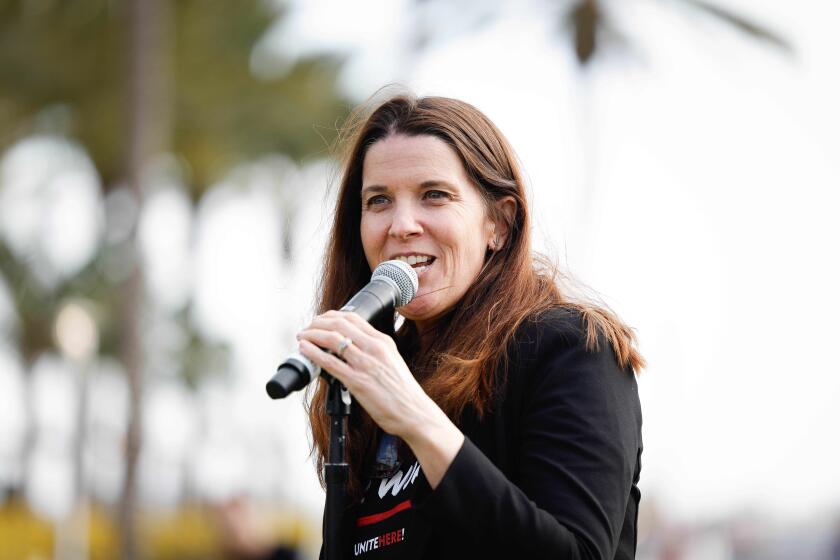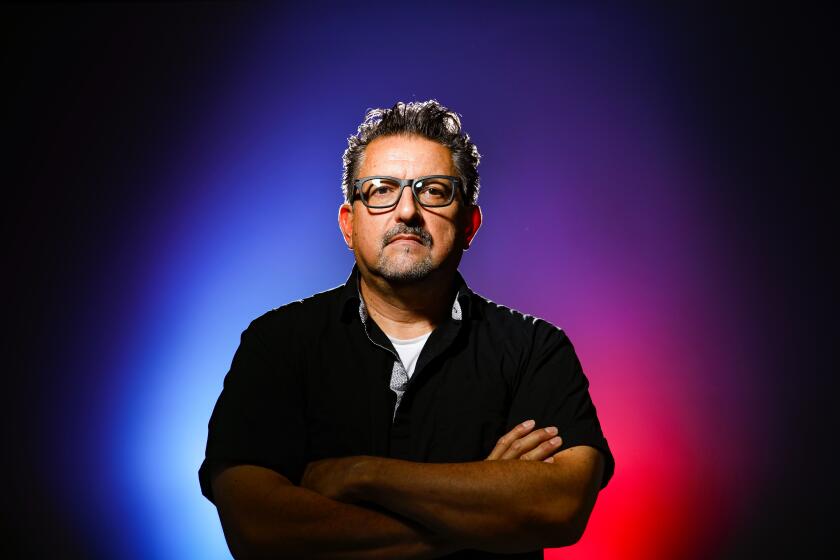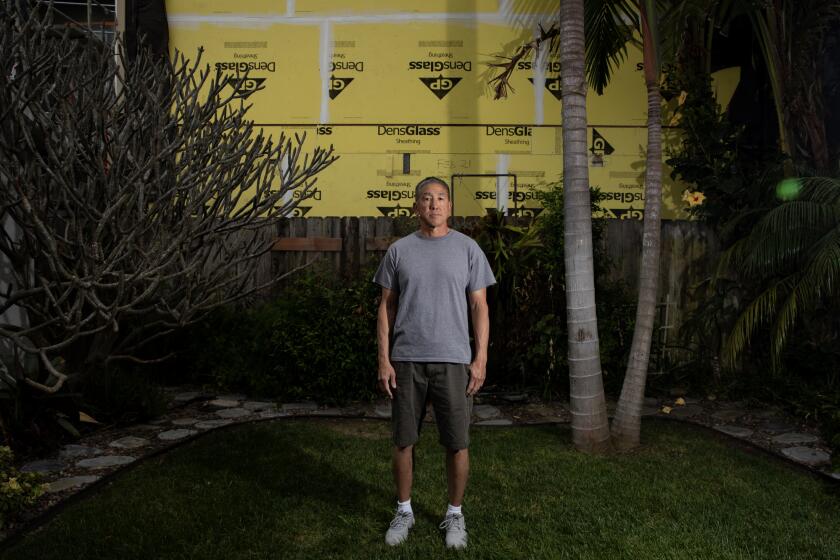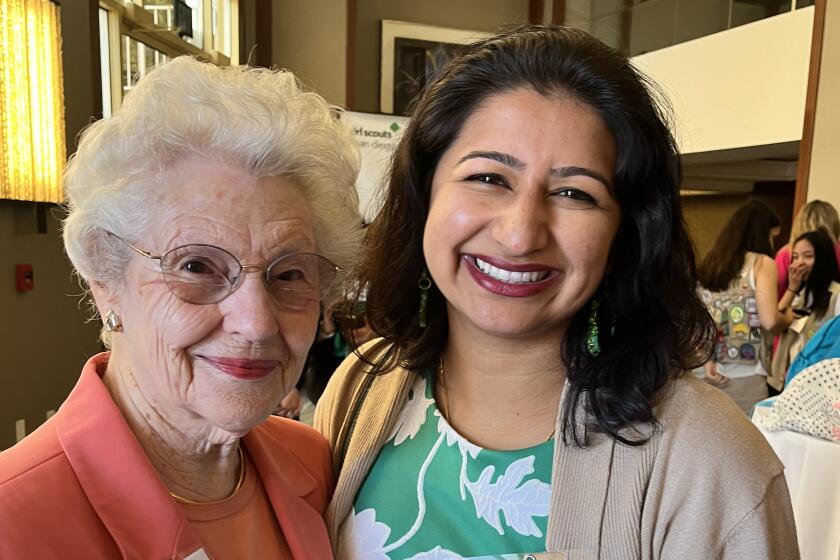Commentary: Why protected bike lanes on 30th Street are right for business, climate and community
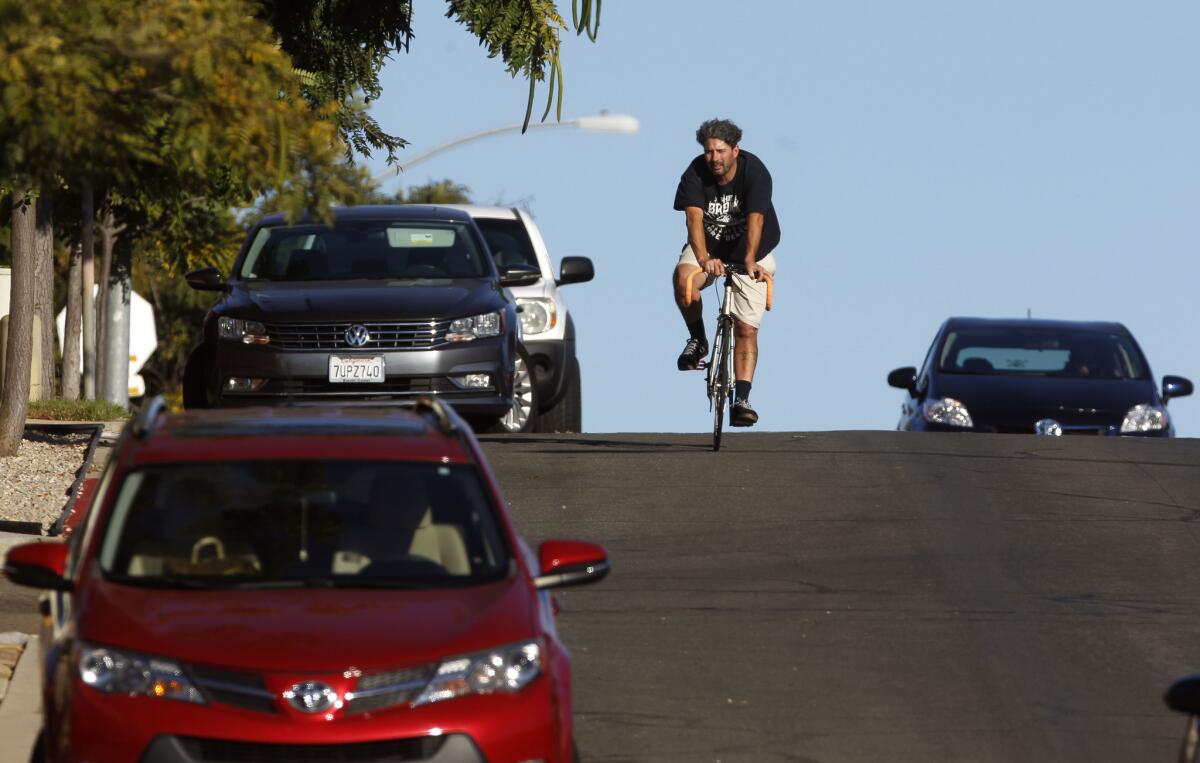
On a sunny Saturday morning in mid-April, nearly 200 San Diegans turned out for an organized ride called “Safe Lanes on 30th Street” to show their support for protected lanes along the corridor.
Riders of all ages and abilities — from 6-year-old children to older residents back on a bike for the first time in years — experienced the comfort of a physically separated lane as they rode through San Diego’s first ever “people-protected lane,” a human barrier separating the bikes from the cars. While drivers trudged along, often solo, the riders smiled at each other, breeze on their faces, and met new neighbors as they began to realize there could be a better way to get around their neighborhood. The outpouring of support and enthusiasm sent a message, loud and clear, that North Park is ready for real alternatives to driving.
San Diego’s mid-city communities have become a test lab for a social engineering theory that more density, less parking and new bike lanes will reduce pollution by forcing a mass migration of commuters from cars to bikes.
Last month, Mayor Kevin Faulconer responded to these calls for change by issuing a memo directing staff to design protected lanes on both sides of 30th Street from Juniper to Howard and to explore the possibility of extending the project up to Adams. The memo also calls for removing parking on 30th Street, where feasible, to allow space for lanes that can accommodate a high volume of bike and scooter ridership. The mayor’s direction was the right call for climate, for mobility and for the health of the North Park community at large.
The current state of 30th Street, the road rough with years of abuse and lacking bike lanes and pedestrian safety features, results in only the most confident riders braving the traffic to travel by bike. Citywide, streets designed to keep car traffic moving have neglected the needs of bicyclists and pedestrians, fueling the car-centric mobility that is accelerating the climate crisis, polluting our air and starving our neighborhoods of their full potential as vibrant, people-centered social and economic hubs.
The consequences are dire: Fire season in California is now year-round and sea levels are rising, our air quality ranks among the worst in the nation, and vulnerable road users are losing their lives on roads that are dangerous by design (34 pedestrians were killed in crashes in San Diego in 2018). None of this is normal and none of it is inevitable. Although with change comes uncertainty, the greatest certainty of all is that doing nothing will make things steadily worse. Bringing protected bike lanes to 30th Street is exactly the kind of step we need to take to begin righting the ship.
By building protected lanes, the city will make it possible for those who are interested in riding but concerned about safety to get back on a bike, worry-free. And as a connected network of safe and convenient lanes grows across the city, we can expect a major uptick in bike ridership in line with the city’s legally binding requirement to meet its Climate Action Plan targets, including shifting commute trips so that by 2035 half of commuters in the city’s urban core areas are traveling by biking, walking and transit.
Protected lanes on 30th are the right call for businesses, too. In city after city, adding protected bike lanes, as well as pedestrian improvements, have proven to be a boon to local businesses. For example, when a new protected bike lane was installed on Broadway in Salt Lake City, sales on the street rose 8.8%, even as on-street parking was cut. It’s common to hear that San Diego is unique, but whether a city is frigid or hot, hilly or flat, rainy or sunny, the result is the same: a network of protected bike lanes leads to thriving neighborhoods that support their local businesses.
And protected lanes on 30th Street should be just the beginning of a broader process of envisioning and implementing comprehensive corridor improvements. Enhancements such as pedestrian bulb-outs, better visibility at crossings, enhanced pedestrian markings, planters and other improvements can further activate and enliven the neighborhood. Once we recognize and decide to unlock the full value of our city streets, the possibilities are endless.
We look forward to fully protected bike lanes along 30th Street in North Park because we — business owners, employees, residents, all of us — need and deserve to live in healthy communities with clean air that are doing their fair share to address the climate crisis. These lanes are just the beginning of the process of remaking our streets to work for all of us in the shift toward a healthy, safe, and livable future.
McKean is founder and CEO of Modern Times Beer, Wolfram is director of programs at Climate Action Campaign, a board member of BikeSD, and serves on the City of San Diego Mobility Board, and Marsh is an architect and a resident of North Park.
Get Weekend Opinion on Sundays and Reader Opinion on Mondays
Editorials, commentary and more delivered Sunday morning, and Reader Reaction on Mondays.
You may occasionally receive promotional content from the San Diego Union-Tribune.
